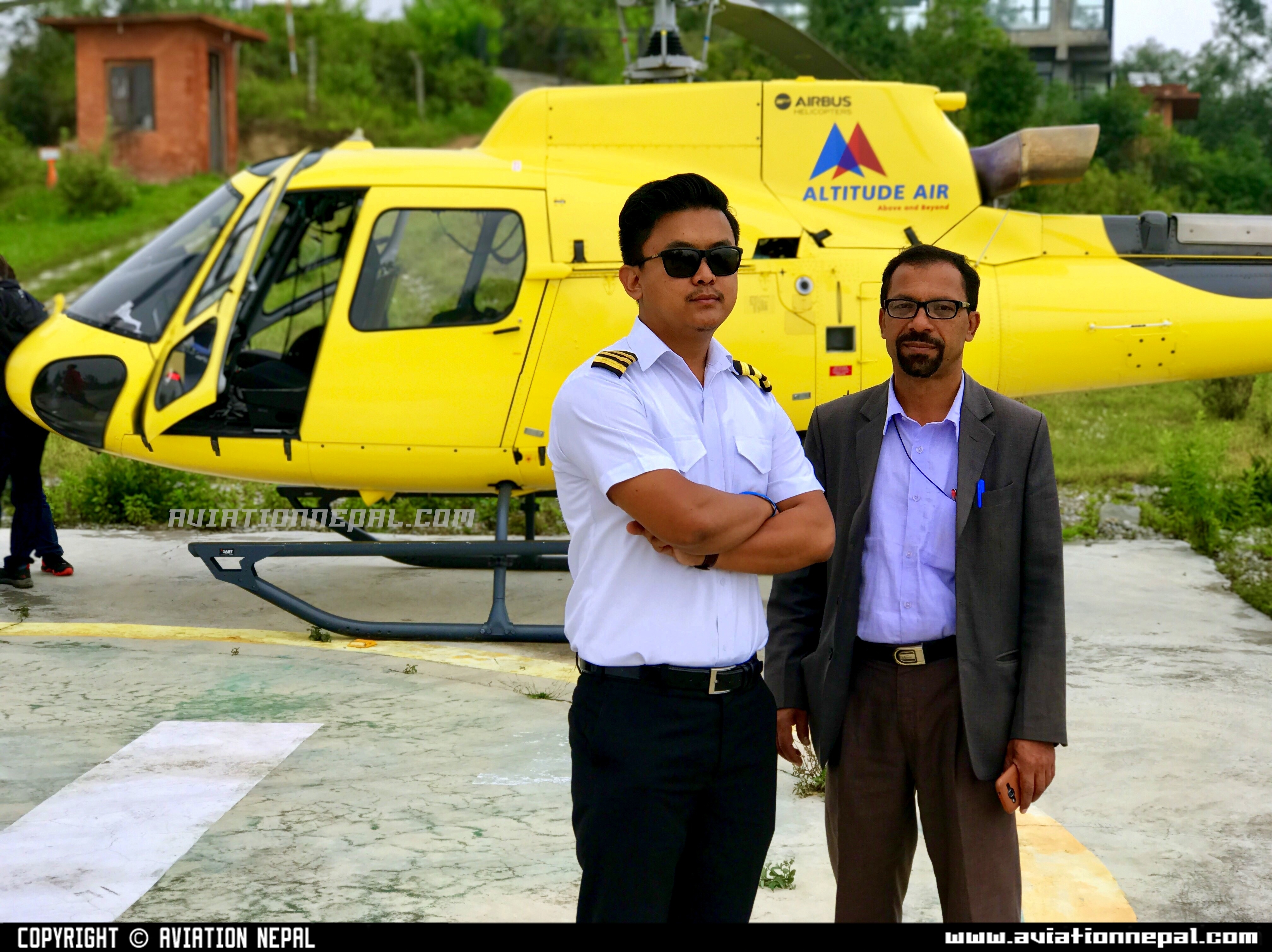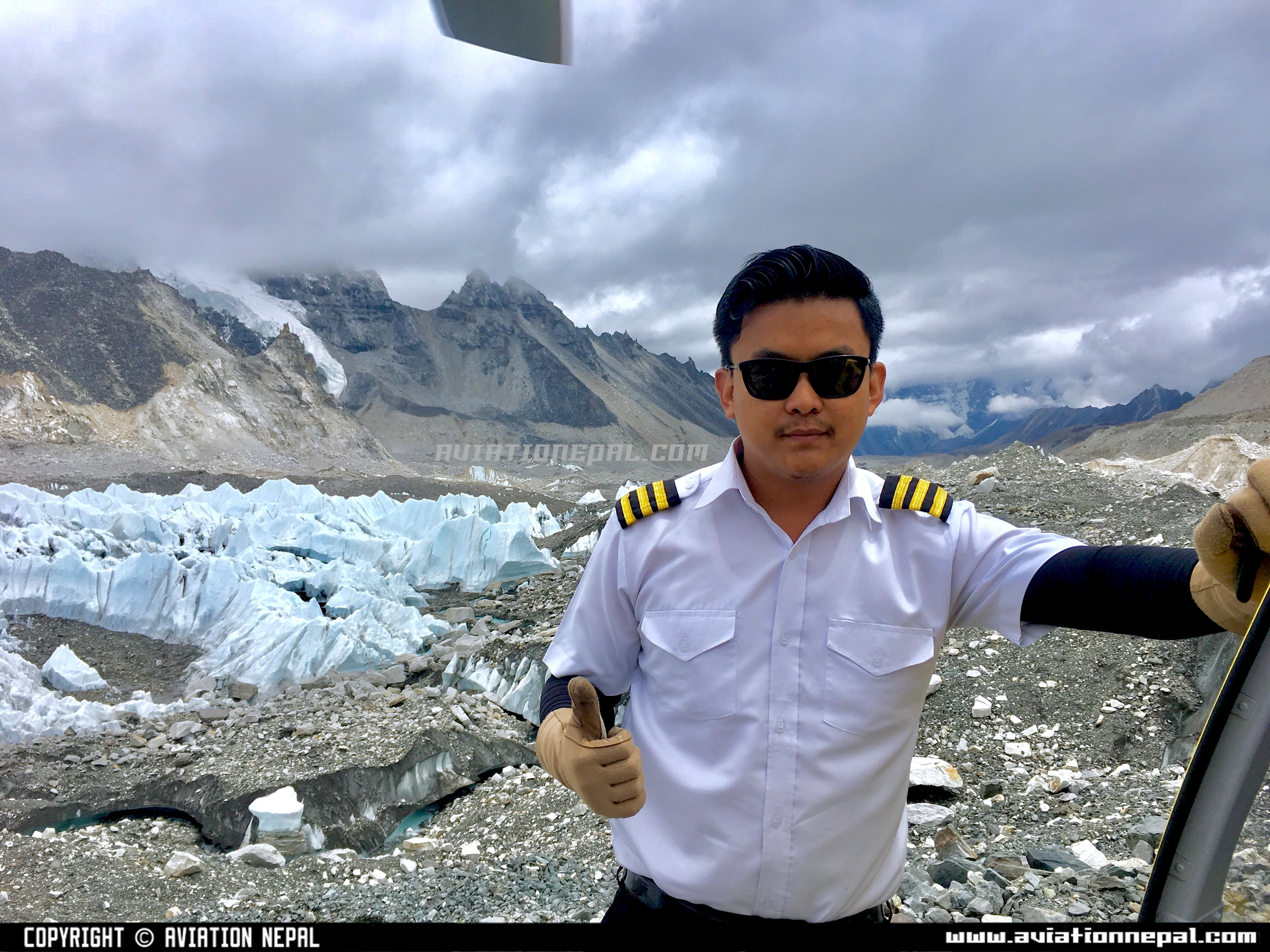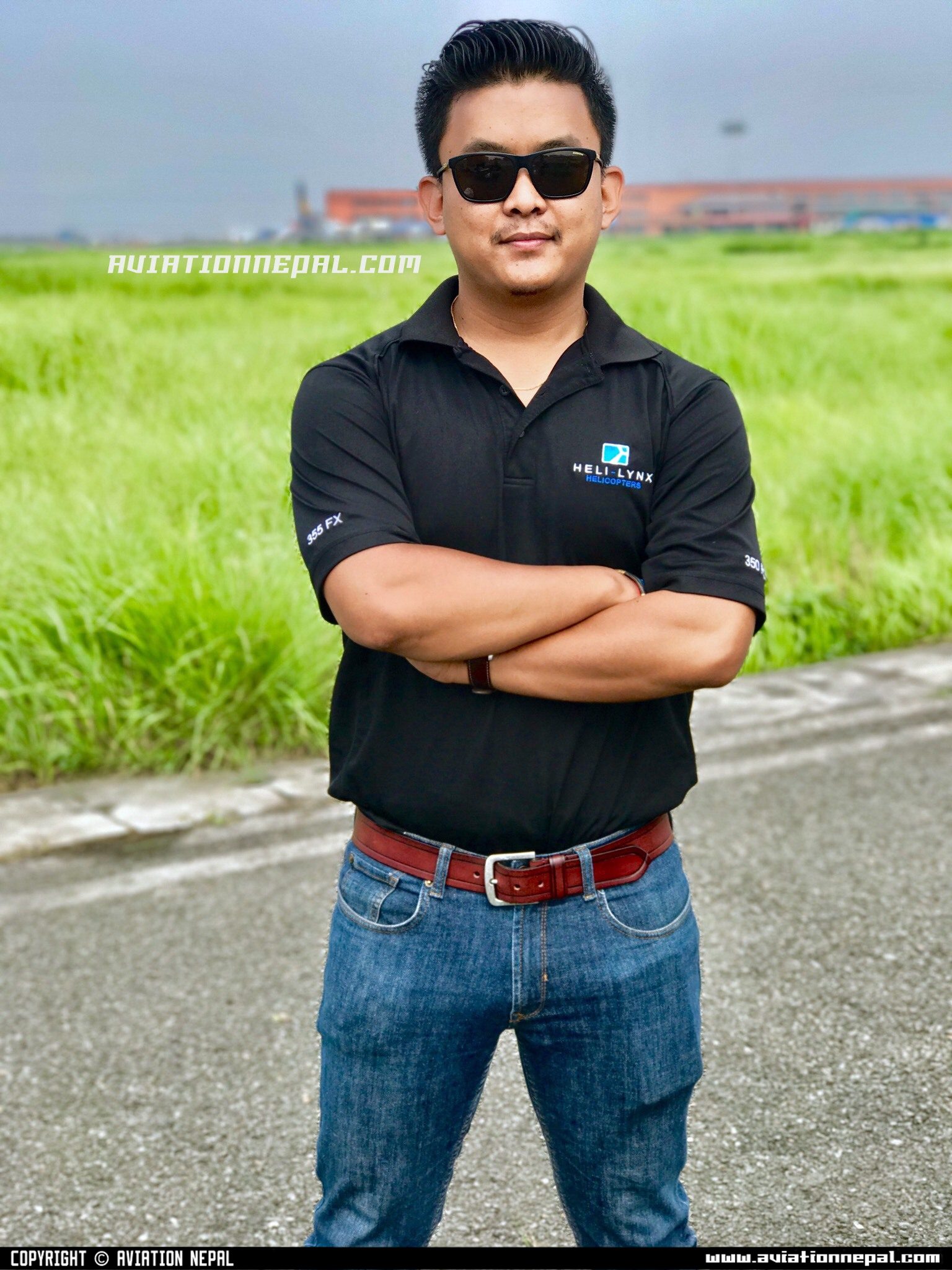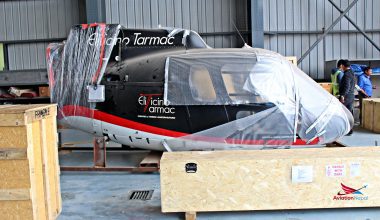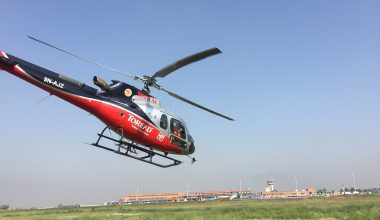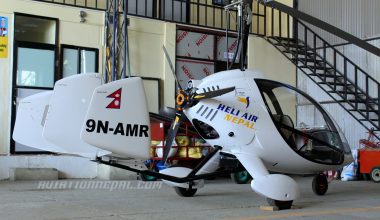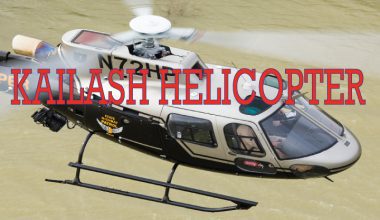Captain Sobit Gauchan…
The capability of a helicopter to stay stationary at any point in the air inside troposphere granted a simple man to become a god like a feature to another man. A man comes out of a helicopter, ties itself in a sling rope and slowly moves down through hoist attached at the bottom of the helicopter and goes down at any altitude to save another man at any location around the earth. Yes, this operation can be modified into carrying cargos, loads, constructing materials, scientific structures, communication antennas, vehicles or any calculated possibilities. But, saving a life has to be the best contribution that rotorcraft will continue to provide for earth’s inhabitants.
Aviation Talk with Captain Sobit Gauchan
1. Would you share your childhood and your hometown?
I was born in Pakhapani and grew up in Beni Bazaar. Pakhapani is a small and beautiful village in Myagdi district. Beni Bazaar is the same Bazaar in the song “beni ko bazaar jata maya utai cha nazaara”. Kali Gandaki and Myagdi River meet at a point thus the name Beni.
2. Do you recall your childhood? What did you want to be then?
As a child, my favorite thing to do was go swim in Myagdi River with my friends. My mom would come looking for me on the river whenever I went missing. Besides, I think I was the champion in playing marbles. I would go from tole to tole challenging players and come victorious every time. The sound a pocket full of marble makes is unforgettable. I used to enjoy doing all sorts of things like this. At the end of our town there is a football field and time and again helicopter would land there. The dust blown away by the downwash would be seen from miles away. I ran the fastest I could whenever I saw that just to get a glimpse of how the helicopter and more importantly how the pilot flying would look like.
3. Can you recall the moment when you knew you wanted to become a pilot?
As a child, I didn’t have the aim to become something. As I was growing, I knew that I had to do well in studies and get good grades. I knew I had to listen to teachers and be disciplined. All I knew was that I had to make my parents happy and proud. My nature is such that when I choose to do something I do it wholeheartedly. I did the same about being a pilot. God paved the way for me to choose this as my profession and now a passion. I thank god for guiding me to this path.
4. When it comes to Aviation, Fixed Wing sector has high influence and dominance but what made you choose the rotor wing?
Fixed wing and rotor wing both are equally fascinating to me. Both fly and defy the gravity and in two different ways. I have flown both fixed wing and rotor wing. I have a license for both of them. I am happy flying the helicopter for now. As a helicopter pilot, you get to save lives. And I tell you, my friend, there is no greater satisfaction than that. You make the difference. During the earthquake, whatever the media portrayed, we were the first responders. Helicopters and helicopter pilots from Nepal. We worked tirelessly to get the injured men women children out from danger and to the hospital. I lost my best friend Subek to earthquake doing the same humanitarian work.
5. What about the feasibility of rotor wing in Nepal?
Tourism is one of the major money makers for Nepal. As long as the mountains are there we will have climbers coming from all over the world. As long as we preserve and promote the trekking trails and routes we have, trekkers will be there. The helicopter industry relies on this. The helicopter industry has grown significantly in this past 7 years. If I recall it properly 15+ helicopters were added in this 7 years span. More operators and more helicopters are expected to come. The numbers of flights have gone up significantly as well. However, unhealthy competition exists. Instead of the operators, middle men are benefitting because of this unhealthy competition. If operators can get rid of this I see a very prosperous future for the helicopter Industry in Nepal.
6. What/ who was your inspiration to become a pilot?
Before heading for my pilot training in the Philippines I took ground and simulator course here in Nepal. I was trained and taught by Capt. Sanjay Baidya. He flies for Nepal Airlines. He is my first Guru in aviation. He will always hold a special place in my mind and heart.
7. Can you recall the time of your appointment? How did you feel then?
I had a job guarantee from Air Dynasty before I started my helicopter pilot training. Therefore, I got the appointment as soon as I came to Nepal on 15th Feb. 2011.
8. How difficult was it adjusting to the skies of Nepal?
When you hear someone speak in the same accent as you have in the radio, you feel home. I had a smile in my face when I made the first radio call and got the reply back in a Nepali accent. I didn’t have much difficulty adjusting to the radio calls. However, the flying experience was completely different. The helicopter felt very big. The controls felt way smoother and I was carrying passengers for the first time. To sum up, it was not difficult but was learning new things every other day.
9. How long have you been working in Nepalese aviation industry, can you tell us about the most memorable experience you have ever had?
I have been flying in Nepal since 2011. For me, every other flying day is the most memorable day. I get to experience all sorts of situations in each and every flight. Sometimes I wonder if I could put those experiences into words it would make an excellent story to read.
10. Do you have any ritual or some distinct habit of any kind you follow before every flight?
I begin my day remembering God. I ask for the blessings. And I end my day thanking God for the blessed day.
11. Being a successful pilot, what contributions have you made or will make towards your Hometown and society?
I wish for the overall development of my hometown and Nation as a whole. I am committed to do whatever I can as a responsible citizen of the country.
I have seen people pay lifelong earnings for the cost of one helicopter transfer. I have seen people in distress waiting to be evacuated. I have seen people suffer due to landslides. I have seen people suffer due to an earthquake. I have seen a pregnant mother in pain due to lack of proper health facilities. I have seen people die because they were late to bring them to a hospital. I have an interest in this matter besides helicopter flying. I want to be able to do something for all of them. If God permits, I will be able to one day.
12. Do you feel the necessity of any change in the system of Altitude Air to enable it to flourish? Can you provide a brief explanation, if any?
As an operations director of the company, I have a big responsibility to fulfill. I will try my best in my department to take Altitude air to greater heights.
13. What are your thoughts on CAAN’s rules and regulations? Is there room for improvement?
I heard that SSC (significant safety concern) from ICAO has been lifted. This is very positive news and shows that our aviation is moving ahead. I wish the pace that it is moving in increases. To increase that pace, everyone involved should work very hard and clear and complete rules and regulations should be introduced. An effective and efficient system should be put in place.
I think CAAN is moving in a right direction. It has improved a lot than before. However, there are things that needs to be improved. As I mentioned earlier a clear and complete rule and regulations should be introduced. In addition to this, I think we lack enough qualified and well-trained manpower looking after the matters of the helicopter.
14. Have you ever faced any emergency situation? If yes, how did you tackle it?
I have not encountered any major emergency situation. The technology today has advanced so much that it’s unlikely that you encounter any technical emergency. Therefore, you as a pilot have the responsibility to assess the situation and make the right aeronautical decision to avoid getting into an emergency situation where you have to tackle it. However, if there is any kind of emergency we are trained to execute the emergency procedures to bring the helicopter safely to the ground.
15. Do you find maintenance engineering practice safe and sound in Nepal?
Maintenance practice in altitude air is safe and sound. I personally think it is safe and sound in other organizations as well in Nepal.
16. What token of advice can you provide to newcomers in aviation?
Aviation in Nepal is a small and growing industry. Therefore, there are both challenges and opportunities. If you work hard with dedication and passion you surely can get the fruitful results.
17. Any particular message for future rotor wing pilots who look unto you as an inspiration?
Helicopter industry has grown significantly and is still growing. We lack enough Nepali helicopter pilots. We are relying on foreign pilots. Therefore, I would recommend that those who want to become helicopter pilots, go ahead for the training.
18. Any message you want to share with our readers?
Social media is a very powerful tool. What we write, say or share makes a huge difference. Therefore, as an aviation lover and responsible Nepalese citizen, we have the responsibility to write, say and share the right information and discourage the false and wrong information. So I say Lets spread the right and discourage any kind of wrong information regarding aviation. I am telling this because I have witnessed much false news being written for cheap publicity and shared by many people who don’t care if it’s right or wrong.
19. As baffling and tough as it looks, how do you do it all? How do you live and excel at all the things you have done?
Being a helicopter pilot and opportunity to fly in the Himalayas is a blessing. However, high terrains and mountains make Nepal one of the most challenging places to fly the helicopter. We literally operate in the limits. People and aircraft are the same. They both need oxygen.Most of the helicopter operations are In the high altitude where we experience a lack of oxygen thus reduced performance. To add to this the ever changing mountain weather. The aircraft is a limit, the pilot flying is a limit, and the weather. Thus, to cope up with this situation first you make sure you are SAFE, make sure your helicopter is absolutely fit to fly and the weather as well. Making sure you are SAFE requires discipline. Illness, Medication, Sleep, Alcohol, Fatigue, Eating (IMSAFE) check is a simple and very effective tool I use to determine if I am safe for the flight. In addition to this, I believe more time you spend on ground planning less you have to worry about when airborne.Always respect mother nature. Never challenge the weather. And most of all know your limits. I follow these simple yet important principles when I fly. Last but not the least, I tell myself and whoever I train that “don’t be brave but don’t be afraid “. This means don’t get you in the situation by being brave. However, if you’re already in a situation don’t be afraid. Take the charge and get out of the situation using your best judgment. This will never let you cross that fine line between confidence and overconfidence.
20. What are your views on the initiative that is www.aviationnepal.com? Do you have any valuable advice for us?
Aviation Nepal is doing a great job. I wish aviation Nepal all the very best. Keep up the good work that you guys have been doing. And keep learning and keep improving and always move forward.
